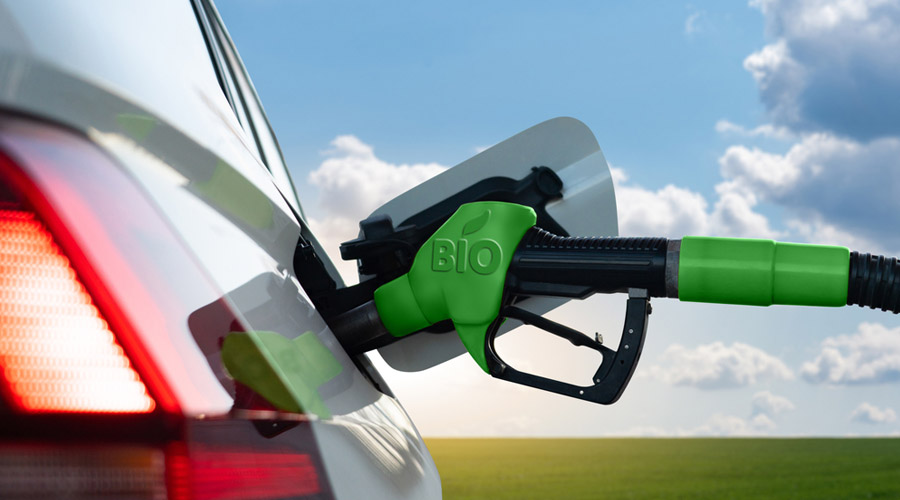Petrol doped with 20 per cent ethanol was rolled out on Monday at select petrol pumps in 11 states and union territories as part of a programme to increase use of biofuels to cut emissions as well as dependence on foreign exchange-draining imports.
At present, 10 per cent ethanol is blended in petrol (10 per cent ethanol, 90 per cent petrol) and the government is looking to double this quantity by 2025.
Prime Minister Narendra Modi launched the higher 20 per cent ethanol blended petrol two months ahead of the planned rollout in April, at the India Energy Week (IEW) 2023 here.
"We have increased ethanol blending in petrol from 1.5 per cent (in 2014) to 10 per cent and are now progressing towards 20 per cent blending," Modi said.
In the first phase, 15 cities will be covered and in the next two years it will be expanded throughout the country.
India saved as much as Rs 53,894 crore in forex outgo from 10 per cent blending besides benefiting the farmers.
E-20 (petrol with 20 per cent ethanol) will be available at 84 petrol pumps of three state-owned fuel retailers in 11 States/UTs.
Oil Minister Hardeep Singh Puri said India achieved blending of 10 per cent ethanol in petrol, 5 months in advance during June'2022.
"We also advanced the availability of E20 blended petrol to 2025, 5 years from earlier planned in 2030," he said, adding that now E20 is being rolled out ahead of schedule on a pilot basis.
"As a country on a fast trajectory of economic growth, India is projected to witness the largest increase in energy demand of any country over the next two decades, accounting for close to 28 per cent of incremental global growth in energy demand," he said.
Use of ethanol, extracted from sugarcane as well as broken rice and other agri produce, will help the world's third largest oil consumer and importing country cut its reliance on overseas shipments. India currently is 85 per cent dependent on imports for meeting its oil needs. Also, it cuts carbon emissions.
Use of E20 leads to an estimated reduction of carbon monoxide emissions by about 50 per cent in two-wheelers and about 30 per cent in four-wheelers compared to E0 (neat petrol). Hydrocarbon emissions are estimated to reduce by 20 per cent in both two-wheelers and passenger cars.
India spent USD 120.7 billion on import of crude oil in 2021-22 fiscal (April 2021 to March 2022). In the current fiscal, USD 125 billion have been spent on oil imports in the first nine months (April 2022 to December 2022) alone.
As much as 440 crore litre of ethanol was blended in petrol during the supply year ending November 30, 2022. For the next year, 540 crore litres procurement is being targeted with an eye to start larger volumes of blending.
The target of achieving average 10 per cent blending was achieved in June, 2022, much ahead of the target date of November, 2022. Encouraged by the success, the government advanced the target of 20 per cent ethanol blending in petrol from earlier 2030 to 2025.
The programme gives sugarcane farmers an additional source of income. During the last eight years, ethanol suppliers have earned Rs 81,796 crore while farmers have got Rs 49,078 crore. The country saved Rs 53,894 crore in foreign exchange outgo. Also, it led to reduction of 318 lakh tonnes of carbon-dioxide (CO2) emissions.
Along with the launch of E20, Green Mobility Rally was also part of the IEW-23 to create public awareness for the green fuels in the country such as E20, flex fuels, hydrogen and CNG etc.
The Rally route had displays of creatives showing benefits accrued in terms of foreign exchange, income to farmers and GHG emission reductions. The Green Mobility Rally had various types of two-, three- and four-wheeler vehicles such as E20, E85, CNG, Hydrogen vehicles.
Automobile engines can run on E-20 (petrol doped with 20 per cent ethanol) with minor modifications in engine for corrosion etc.
The government has notified the administered price of ethanol since 2014. For the first time during 2018, the differential price of ethanol based on feed stock utilized for ethanol production was announced by the government.
These decisions have significantly improved the supply of ethanol, consequently ethanol procurement by public sector oil marketing companies (OMCs) has increased from 38 crore litre in Ethanol Supply Year 2013-14 (ESY defined as ethanol supply period from December 1 of a year to November 30 of the following year) to contracts of over 452 crore litre in ongoing ESY 2021-22.
The current annual ethanol production capacity in the country is about 1,037 crore litres which includes 700 crore litres of molasses-based and 337 crore litres of grain-based production capacity.
Oil PSUs are also setting up second generation (2G) ethanol bio-refineries at Panipat (Haryana), at Bathinda (Punjab) and at Bargarh (Odisha), each with a production capacity of 100 kilo litre per day (KLPD) and at Numaligarh (Assam) with a production capacity of 185 KLPD.
As per the Roadmap prepared by NITI Aayog which is based on the projected sale of petrol, the estimated requirement of ethanol for blending with petrol is 542 crore litres for ESY 2022-23, 698 crore litres for ESY 2023-24, 988 crore litres for ESY 2024-25 and 1016 crore litres for ESY 2025-26.
Oil firms have procured 80.09 crore litres of ethanol up to January 30, 2023 for blending in petrol during the ESY 2022-23 and 6 crore litres of bio-diesel for blending with diesel during the financial year 2022-23.
Except for the headline, this story has not been edited by The Telegraph Online staff and has been published from a syndicated feed.











